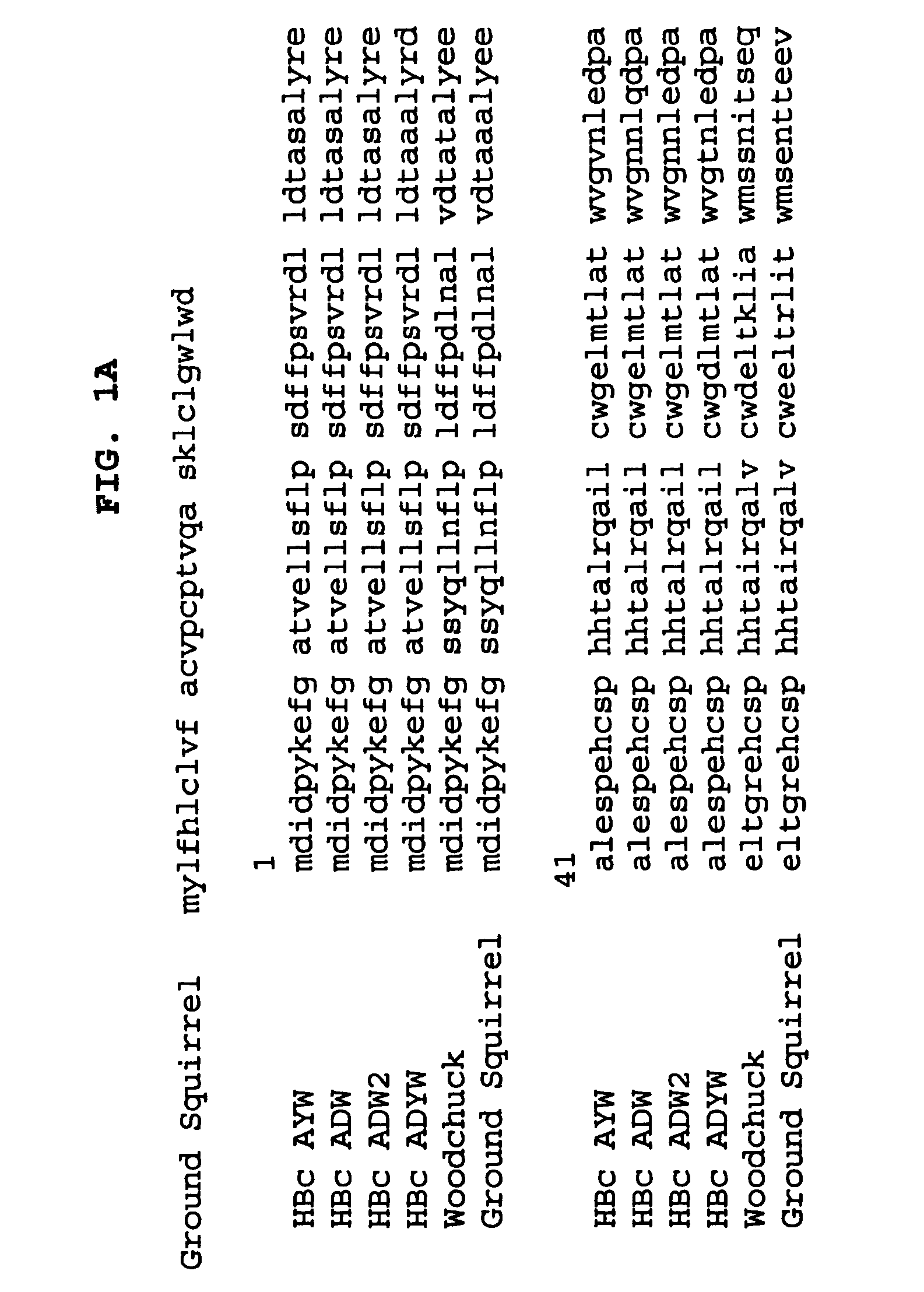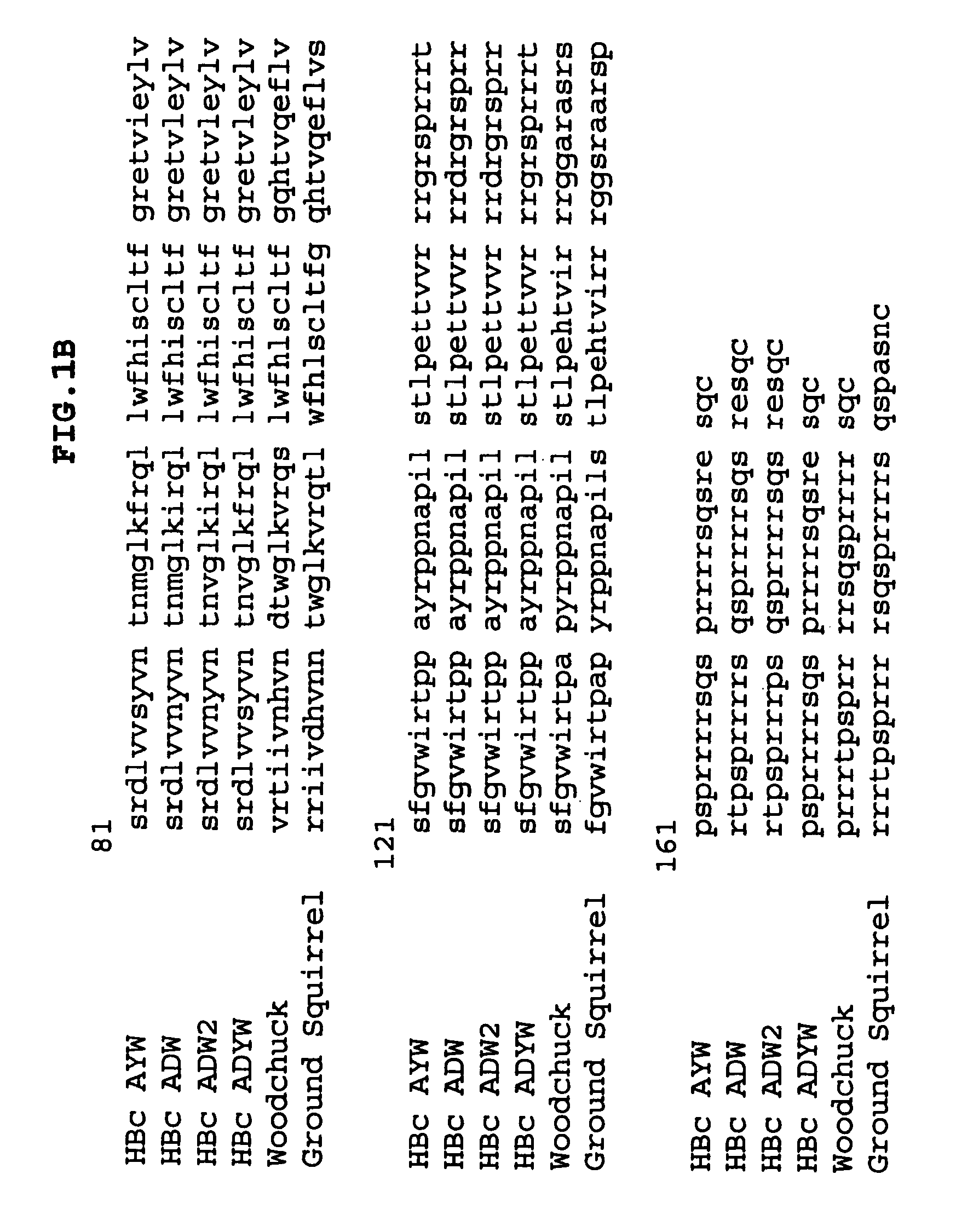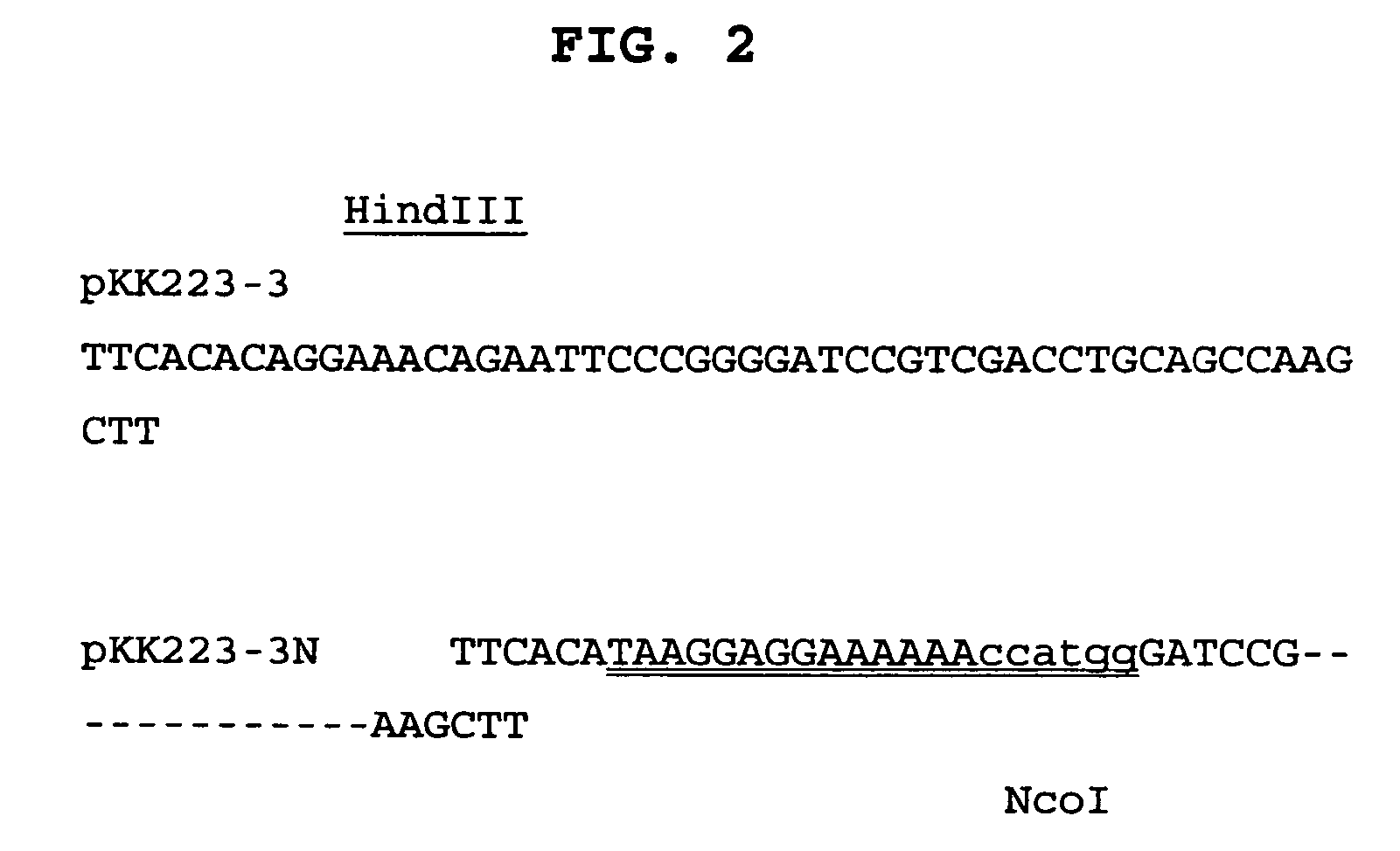Stabilized HBc chimer particles as immunogens for chronic hepatitis
a technology of chimer particles and chronic hepatitis, which is applied in the field of immunology and protein engineering, can solve the problems of increased risk of chronic hepatitis, cirrhosis of the liver, and hepatocellular carcinoma (cancer of the liver), and achieves greater stability in preparation, and is easy to prepare.
- Summary
- Abstract
- Description
- Claims
- Application Information
AI Technical Summary
Benefits of technology
Problems solved by technology
Method used
Image
Examples
example 1
B Cell Epitope-Containing Chimer Preparation
[0306]A. Preparation of plasmid vector pKK223-3N, a modified form of pKK223-3
[0307]Plasmid vector pKK223-3 (Pharmacia) was modified by the establishment of a unique NcoI restriction site to enable insertion of HBc genes as NcoI-HindIII restriction fragments and subsequent expression in E. coli host cells. To modify the pKK223-3 plasmid vector, a new SphI-HindIII fragment was prepared using the PCR primers pKK223-3 / 433-452-F and pKK223-NcoI-mod-R, and pKK223-3 as the template. This PCR fragment was cut with the restriction enzymes SphI and HindIII to provide a 467 bp fragment that was then ligated with a 4106 bp fragment of the pKK223-3 vector, to effectively replace the original 480 bp SphI-HindIII fragment. The resultant plasmid (pKK223-3N) is therefore 13 bp shorter than the parent plasmid and contains modified nucleotide sequence upstream of the introduced NcoI site (see FIG. 1 in which the dashes indicate the absent bases). The final p...
example 2
Assay Procedures
[0329]A. Antigenicity
[0330]1. Particle ELISA
[0331]Purified particles were diluted to a concentration of 10 μg / mL in coating buffer (50 mM sodium bicarbonate, pH 9.6) and coated onto the wells of ELISA strips (50 μL / well). The ELISA strips are incubated at room temperature overnight (about 18 hours). Next morning the wells are washed with ELISA wash buffer [phosphate buffered saline (PBS), pH 7.4, 0.05% Tween®-20] and blocked with 3% BSA in PBS for 1 hour (75 μL / well). ELISA strips are stored, dry, at −20° C. until needed.
[0332]To determine the antigenicity of particles, antisera are diluted using 1% BSA in PBS and 50 μL / well added to antigen-coated ELISA wells. Sera are incubated for 1 hour, washed with ELISA wash buffer and probed using an anti-mouse (IgG)-HRP (The Binding Site, San Diego, Calif.; HRP=horseradish peroxidase) conjugate (50 μL / well) or other appropriate antibody for 30 minutes. After washing with ELISA wash buffer the reaction is visualized by the add...
example 3
Determination of 280:260 Absorbance Ratios
[0343]Protein samples are diluted to a concentration of between 0.1 and 0.3 mg / mL using phosphate buffered saline (PBS), pH 7.4. The spectrophotometer is blanked, using PBS, and the absorbance of the protein sample is measured at wavelengths of 260 nm and 280 nm. The absorbance value determined for a sample at 280 nm is then divided by the absorbance value determined for the same sample at 260 nm to achieve the 280:260 absorbance ratio for a given sample. The ratios were obtained for several samples, including native particles (HBc183), HBc particles truncated after residue position 149 (HBc149), and several HBc chimers that are identified elsewhere herein, are shown below in Table 8. Full length particles ICC-1559 are a preparation of the particles first reported in Neirynck et al., (October 1999) Nature Med., 5(10):1157-1163, whereas full length particles ICC-1607 are similar particles in which the M2 polypeptide cysteines at polypeptide p...
PUM
| Property | Measurement | Unit |
|---|---|---|
| Fraction | aaaaa | aaaaa |
| Immunogenicity | aaaaa | aaaaa |
Abstract
Description
Claims
Application Information
 Login to View More
Login to View More - R&D
- Intellectual Property
- Life Sciences
- Materials
- Tech Scout
- Unparalleled Data Quality
- Higher Quality Content
- 60% Fewer Hallucinations
Browse by: Latest US Patents, China's latest patents, Technical Efficacy Thesaurus, Application Domain, Technology Topic, Popular Technical Reports.
© 2025 PatSnap. All rights reserved.Legal|Privacy policy|Modern Slavery Act Transparency Statement|Sitemap|About US| Contact US: help@patsnap.com



